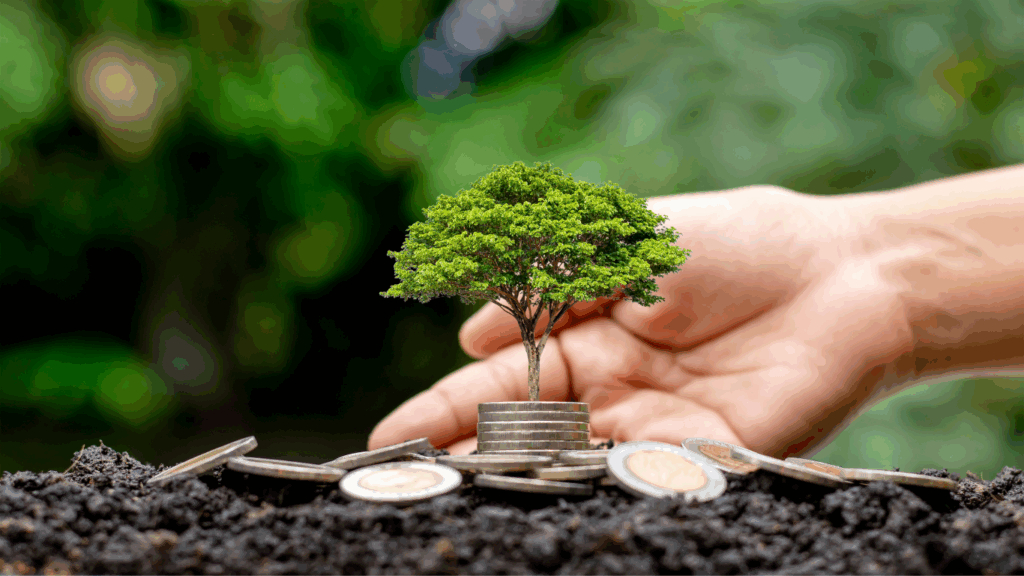Introduction: Somalia’s Economic Crossroads
Somalia’s economy, battered by three decades of civil conflict, climate shocks, and institutional fragility, stands at a pivotal juncture. The country’s GDP, estimated at $7.5 billion in 2022, remains anchored by two traditional pillars: agriculture (40% of GDP) and livestock (20% of GDP). Yet, these sectors are increasingly vulnerable to climate change, with recurring droughts and locust invasions eroding productivity. For instance, the 2021–2023 drought—the worst in 40 years—wiped out 3 million livestock and displaced 1.8 million Somalis, slashing agricultural output by 30%.
Enter Gargaara Finance Limited, a state-backed financial institution established in 2019 to revive Somalia’s MSME sector. With $23.5 million disbursed to date, Gargaara has emerged as a linchpin of economic recovery. Initially focused on agriculture and livestock, the institution is now spearheading a strategic pivot toward renewable energy, a sector poised to address Somalia’s chronic energy poverty while unlocking new value chains. This article unpacks Gargaara’s transformative agenda, examining how bridging agriculture with clean energy could elevate Somalia’s GDP growth to 5.5% annually by 2030.
- The Agricultural Foundation: Challenges and Gargaara’s Early Interventions
1.1 Somalia’s Agrarian Economy: A Double-Edged Sword
Agriculture sustains 65% of Somalia’s population, but its potential is stifled by structural inefficiencies:
- Rain-Fed Dependency: Over 90% of Somali farmland relies on erratic seasonal rains. The 2023 FAO report notes that irrigation covers just 0.2% of arable land, compared to 6% in neighbouring Kenya.
- Fragmented Value Chains: Post-harvest losses exceed 40% due to inadequate storage and transportation. In regions like Bay and Bakool, farmers lose 50% of maize and sorghum yields to pests and spoilage.
- Financial Exclusion: Only 2% of Somali farmers access formal credit, forcing reliance on predatory lenders charging 25–40% interest rates.
1.2 Gargaara’s Agricultural Lifeline (2019–2021)
Gargaara’s founding mission targeted these gaps through:
- Convertible Loans: A $15 million fund offered to PFIs like Amal Bank at 5% interest—half the market rate—for on-lending to agribusinesses.
- Technical Assistance: Training 1,200 farmers in drought-resistant practices and cooperative management.
- Gender Equity: Allocating 15% of loans to women-led agribusinesses, such as the Banadir Women’s Farming Collective, which increased tomato yields by 60% using greenhouse technology.
Impact: By 2021, Gargaara-funded projects created 8,000 jobs and boosted agricultural GDP by $8.2 million. However, the institution recognized that climate volatility demanded a dual strategy: modernizing agriculture while investing in energy resilience.
- The Renewable Energy Imperative: Why Solar and Wind?
2.1 Energy Poverty: A Drag on Development
Somalia’s energy sector is among the world’s least developed:
- Electrification Rates: 33% in cities like Mogadishu and 8% in rural areas.
- Diesel Dependency: Businesses spend 30–50% of profits on diesel for generators, which emit 2.5 million tons of CO₂ annually.
- Healthcare and Education Costs: Hospitals in Kismayo pay $0.50/kWh for diesel power—10 times the cost of solar energy.
2.2 Gargaara’s Strategic Shift (2020–Present)
In 2020, Gargaara allocated 12% of its portfolio ($0.44 million) to pilot renewable projects, driven by:
- Synergies with Agriculture: Solar-powered irrigation and cold storage could reduce post-harvest losses by 40%.
- World Bank Backing: The $150 million Somalia Capacity Advancement, Livelihoods, and Entrepreneurship (SCALED-UP) project provided grants for green energy pilots.
- Youth Employment: Renewable projects employ 25% youth, addressing Somalia’s 75% youth unemployment rate.
- Economic Ripple Effects: From Energy Access to GDP Growth
3.1 Direct Contributions
- Agriculture: Solar irrigation increased output by $2.1 million in Lower Shabelle (2021–2022).
- Fisheries: Solar cold storage in Kismayo reduced post-harvest losses from 50% to 10%, adding $1.8 million to regional GDP.
- Manufacturing: A Mogadishu textile factory cut energy costs by 60% using solar power, enabling a 20% workforce expansion.
3.2 Multiplier Effects
- Job Creation: Renewable projects created 1,200 jobs in 2022—35% in solar installation and maintenance.
- Women’s Empowerment: Female-led solar cooperatives in Puntland increased household incomes by 25%.
- Import Substitution: Solar adoption reduced diesel imports by $12 million in 2022, improving Somalia’s trade balance.
- Navigating Challenges: Policy, Infrastructure, and Perception
4.1 Regulatory Vacuum
Somalia lacks a Renewable Energy Act, deterring private investors. For example, Norwegian firm Scatec Solar paused a 10 MW project in 2022 due to unclear land rights and tariff structures. Gargaara is now drafting a policy framework with the Ministry of Energy, proposing:
- Feed-in Tariffs: Guaranteeing $0.12/kWh for solar energy fed into mini-grids.
- Tax Holidays: 5-year exemptions for renewable equipment imports.
4.2 Infrastructure Gaps
Rural regions lack transmission lines and skilled technicians. In Galmudug, a $500,000 solar project stalled for 8 months due to no local capacity to install bifacial panels. Gargaara’s response:
- Training Centers: Partnering with SILATECH to train 500 solar technicians by 2025.
- Microgrids: Deploying 50 solar microgrids in 2023–2024 to power irrigation and healthcare clinics.
4.3 Cultural Resistance
Pastoralists in Jubaland initially rejected solar pumps, fearing maintenance costs. Gargaara countered with:
- Demonstration Farms: Showcasing solar benefits through 20 model farms.
- Leasing Models: Offering pumps for $30/month with free repairs.
- The Road Ahead: Scaling Ambitions
Gargaara aims to allocate 30% of its $20 million 2024 portfolio to renewables, prioritizing:
- Solar-Wind Hybrids: Piloting 5 MW projects in Berbera’s wind corridors.
- Green Hydrogen: Exploring partnerships with Qatar Fund for Development to produce hydrogen for fertilizer plants.
- Climate Resilience: Insuring renewable assets against cyclones via the African Development Bank.
Projected Impact:
- GDP Growth: Renewable investments could add $120 million annually to GDP by 2030.
- Carbon Reduction: Cutting emissions by 1.2 million tons/year—equivalent to planting 20 million trees.
A Blueprint for African Development
Gargaara’s sectoral pivot underscores a broader truth: In fragile states, economic resilience hinges on intersectoral synergies. By marrying agriculture with renewable energy, Somalia is not just chasing growth—it’s redefining it. As CEO Sulieman Dualeh asserts: “Our farms will power our future.”

